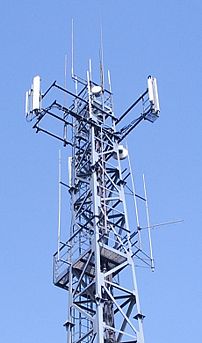MTN asked my reasons for moving to prepaid. So I told them.
Good day,
Although my technical experience with MTN has been excellent, I have had numerous problems in a number of other areas, specifically related to contract.
1) Price increase during a contract term.
I signed a contract with MTN to pay a certain price for service for 24 months. Half way during this period MTN then decided to raise the price. This is MTN operating in bad faith.
2) When my contract expired, nobody contacted me to offer any upgrade opportunities. Furthermore, I was made to pay an additional R85 for a lousy 300MB of data, something which previously had been included in my contract price.
3) Billing
The invoice and billing system remains a mess. The “Last 3 months Usage” regularly repeats the month. e.g my “Last 3 months” is Feb, Feb, Jan. Statements are not intuitive. Itemised billing is ridiculously overpriced.
4) Web usability
I have a plethora of different login details for all the MTN related websites. mtn.co.za shop.mtn.co.za mycontract.mtn.co.za all have different login methods and randomly get locked requiring more time to attempt to unlock them. The websites are noisy and do not form a cohesive experience. Functionality is often hidden from the user. Also, massive overlaps of functionality exist which is completely unnecessary.
5) Apps
There are 2 MTN apps for iOS that I have installed on my phone. Both are clunky and poorly designed. They appear to have been created by amateurs. They are more hassle than useful. The one also has some ridiculous USSD verification that one has to go through every time one tries to access the app.
6) Preference to Prepaid
Most specials and reduced rates, data bundles, competitions, MTN Zone, and various other products are targeted specifically at Prepaid customers. Once a customer is locked in a contract, MTN don’t give a damn about them as long as they keep paying. I’ve been a contract customer for around 16 or so years and never felt I was considered more valued than a prepaid customer, which I should be. I can’t use the R200 value included in my contract to buy a data or sms bundle – I’m forced to pay out of bundle rates even when I have an airtime balance of R1000 or more.
7) SMS and Data costs
SMS texting should basically be free – it runs over a control channel and was never supposed to be a paid-for service. Out of bundle contract data prices are still very high on the MTN network. All data should be the same low price. In the United States I paid R400 for unlimited voice, text and data for a month.
8) Net Neutrality
MTN does not support Net Neutrality. I therefore prefer to be on an ad-hoc prepaid account to allow for easier migration to a more Net Neutral competitor should it become necessary.
Please be sure to credit my prepaid account with the remainder of my current airtime, data and sms balance when doing the migration. I have paid for the airtime. It is attached to this SIM/IMEI and I am entitled to it. A failure to do so could be in breach of the consumer protection act.
Regards
Shaun.






![Reblog this post [with Zemanta]](https://i0.wp.com/img.zemanta.com/reblog_e.png?w=580)